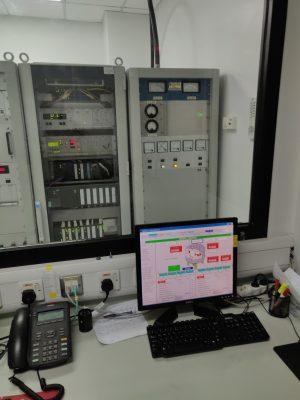4 Common Radiation Detection Systems for Radiation Assessment

Radiation detection requires specially designed instruments as human senses are unable to identify the presence of radionuclides in the atmosphere. This includes a range of portable as well as laboratory systems that are capable of detecting and monitoring radioactivity.

In this article, we will cover four commonly used radiation detection systems useful in assessing contamination from exposure to radionuclides.
Geiger Counter - It is used with a Geiger-Mueller (GM) Tube or Probe. A GM tube is essentially a container that contains a type of gas. The application of a high voltage current builds an electrical pulse every time radiation interacts with that gas. These electrical pulses are translated into readings that show on the instrument meter.
These pulses also provide a
“click” sound in case the tool comes with a speaker. Some units in which these
pulses are converted include
● Counts
per minute (CPM)
● millirem
per hour (mrem/hr)
● roentgens
per hour (R/hr)
● milliroentgens per hour (mR/hr)
A GM probe is commonly used with handheld radiation monitoring systems to measure and keep an eye on contamination. Certain energy-compensated GM tubes can also be used to measure exposure. Additionally, meters utilized alongside a GM probe are also capable of accommodating other types of probes used in identifying radiation.
One example of this is a zinc sulfide (ZnS) scintillator probe. It can detect only alpha radiation and is typically applied in field measurements to assess radioactive substances that are emitting alpha rays.
MicroR Meter - Sodium Iodide, when in solid crystal form, reacts with radiation by letting out a light pulse. It is hence, used as Sodium Iodide detectors with global radiation detection solutions known as MicroR Meters. The light pulse grows stronger when a greater amount of light is generated by the detector and more energy is stored in the crystal.
This pulse is converted into electrical signals and measured to take readings. A PMT or a photomultiplier tube is tasked with this conversion as these instruments typically contain upper and lower energy discriminator circuits. Their appropriate application in the form of single-channel analyzers is capable of giving information on gamma energy and detect radioactivity.
Again, instruments that are fitted with a speaker also provide clicking noises whenever pulses get generated. This is useful when the source is unknown. Readings are commonly recorded in counts per minute or micro roentgens per hour (μR/hr).
Sodium iodide detectors are used with both portable as well as big radiation detection systems. The sodium iodide is also replaced by an inert crystal scintillator sometimes.
Handheld Multichannel Analyzer - When the abovementioned sodium iodide detector and photomultiplier tube are combined to use with a smaller electronics system that consists of a multichannel analyzer, it turns into a cost-effective solution.
The handheld multichannel
analyzer is capable of instantly detecting and identifying the kind of
radionuclides present in an area. This is possible with the implementation of
gamma-ray information libraries along with automatic gamma-ray spectroscopy or
other detection processes. This type of radiation detection system proves
instrumental when the type of radiation contamination isn’t known. Hence, these
are also used as environmental
monitoring systems.
Ionization Chambers - An ion chamber contains a central anode and an inner wall that can conduct electricity. However, the voltage applied to it is comparatively low. When the air volume sees the formation of primary ion pairs due to gamma-ray or x-ray reactions with the chamber wall, the electrons get accumulated at the anode to produce a minor charge.
The charge generated is assessed by an electrometer circuit and numerically represented through an analogue or a digital meter. Such radiation detection systems need to be adjusted correctly to a detectable radiation source. Moreover, these are created to give a precise measurement of the dose that has been absorbed in the air. Using the right conversion factors, this measurement can be converted into a dose to tissue quantity.
Since a majority of ionization
chambers are “Open-air”, they require calibration and correction every time
there is a change in atmospheric temperature and pressure. Readout units are
generally measured in milli roentgens per hour or roentgen per hour (mR/hr or
R/hr).
Post Your Ad Here
Comments